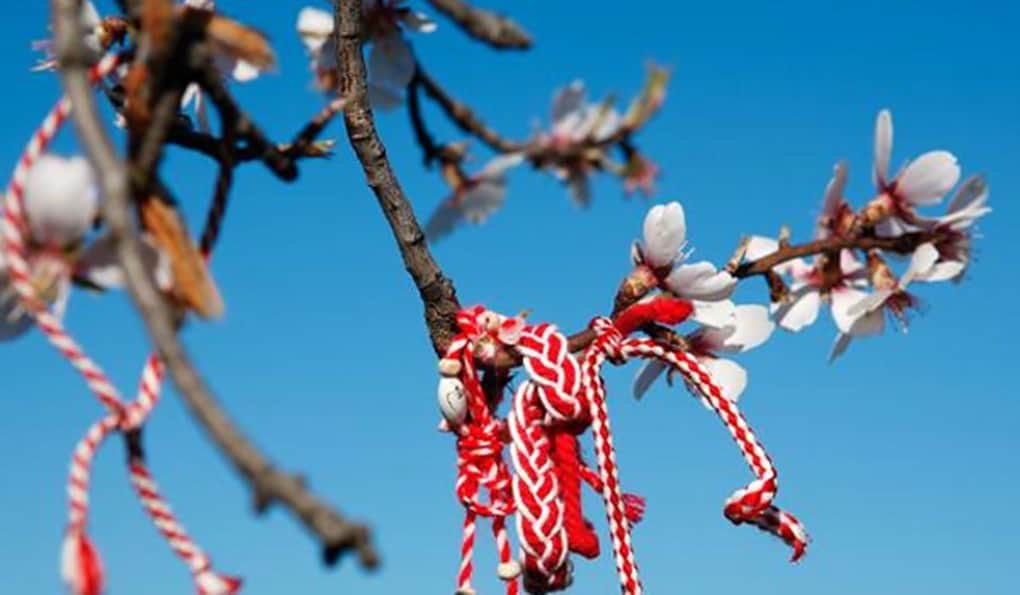March is the first month of spring in Greece, and there is a lovely custom welcoming its arrival.

On the 1st of March, it is customary to braid bracelets. These bracelets are called ‘Martis’. The word ‘Martis’ in March, in Greek. They are made of red and white string and are tied onto the wrists. Folk superstition has it that people wear these bracelets so that early spring sun does not burn their cheeks. The colour of the bracelets is red and white, symbolising rosy cheeks and a white complexion.
More specifically, red is meant to symbolise vitality, health and love, victory, life and courage, the light of a rising or setting sun, and the white colour is said to be a sign of beauty, purity, innocence, and joy.
This is the day of the year that Yiayia would say:
‘Απού ‘χει κόρη ακριβή, του Μάρτη ο ήλιος μην τη δει’
This translates to: “If you have a precious daughter, don’t let the sun of March see her”. In earlier years, a woman’s beauty was defined by her white soft skin. Many grandmothers would not let their daughters or granddaughters spend much time under the sun unprotected.
Traditionally girls would wear the red and white twisted thread around their writs from the first day of spring until the end of March, and then the red and white threaded bracelet would be hung on roses. They say that hanging the thread on red roses will redden the young girl’s cheeks and then be taken by birds to build their nests. Some people also chose to keep the Martaki until Easter time and burn it in the resurrection candle's fire.
Every region of Greece has its own variation of this tradition. However, most kids in Greece and the Diaspora will be sporting a red and white bracelet on their wrists today.
Kalo Marti to all!
Meet Eleni, the immensely talented Greek artist from Byron Bay

